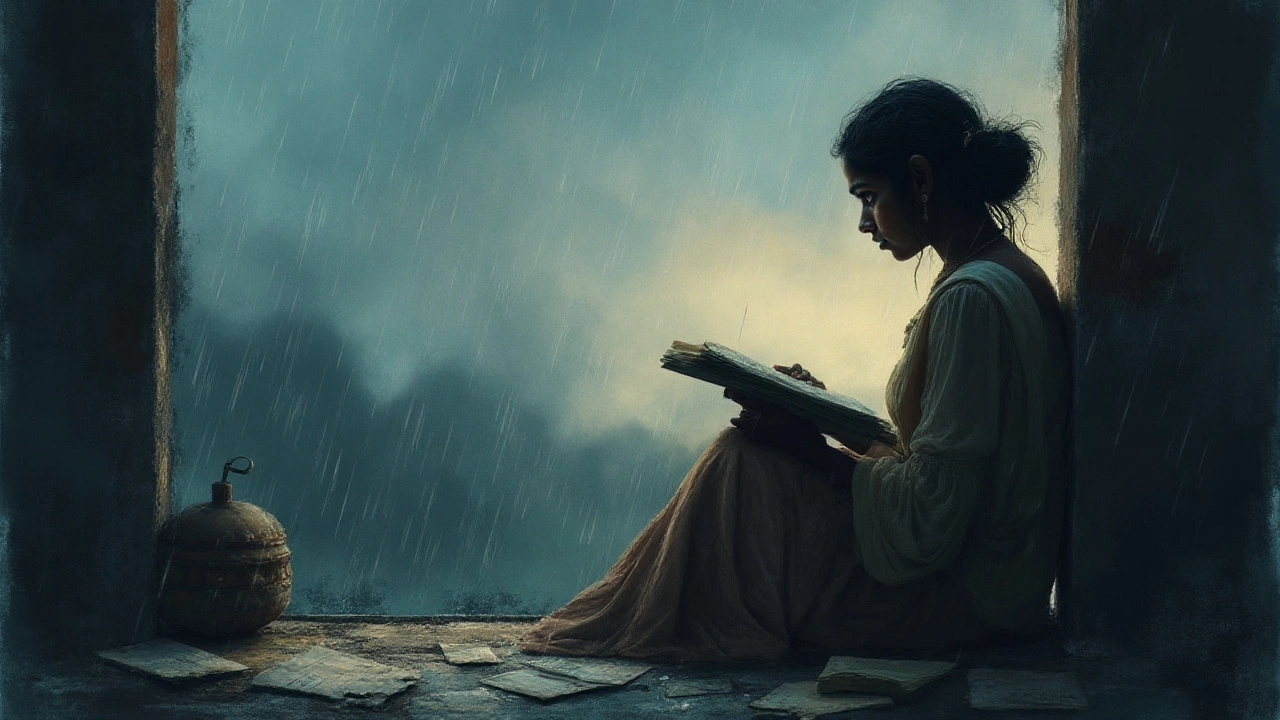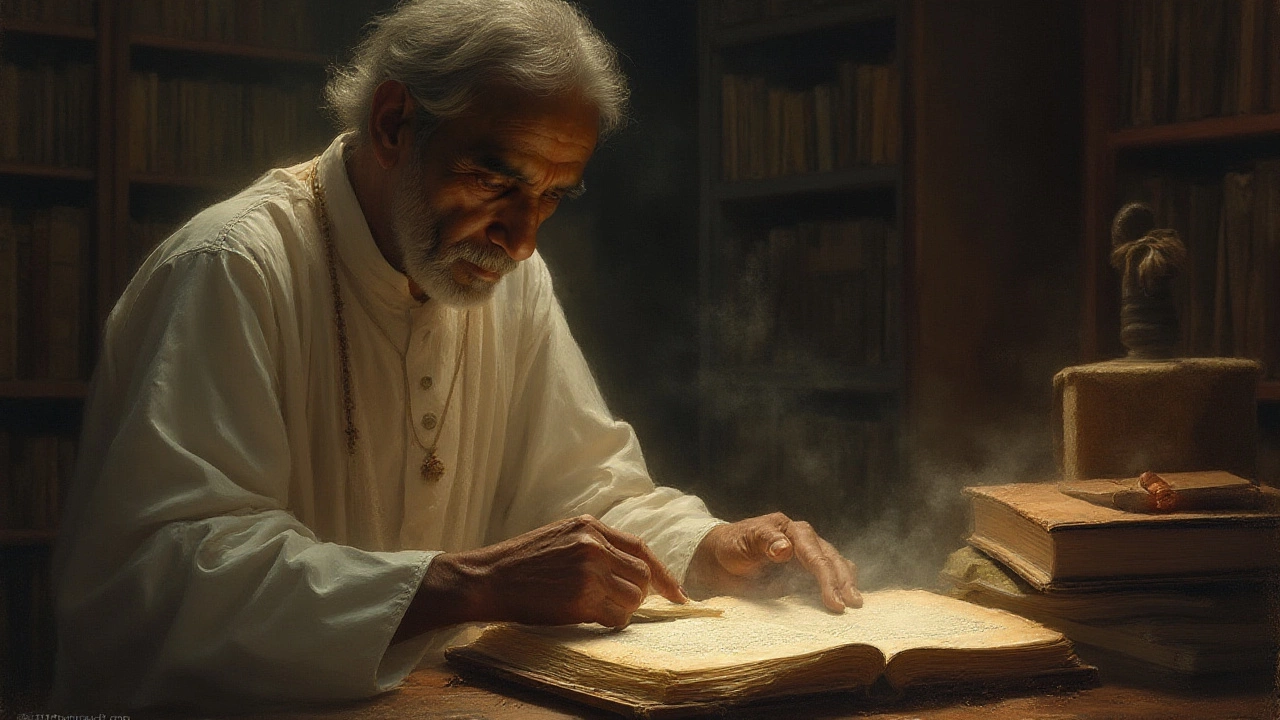
It’s almost unsettling how a handful of lines, scribbled centuries ago, can still reach out and clamp your chest. Poets have a way of nailing pain to the page that sometimes makes you need an extra minute to shake it off. But when people ask, “What is the saddest poem ever written?” the answers aren’t as straightforward as you’d think—everyone’s heartbreak is different. Still, a few contenders keep showing up, echoing through history, hitting nerves across generations. So which poem holds that title for real? Is there even an answer, or is the search for the saddest verse proof that poetry itself just gets the messy side of being alive in a way few things can?
The Many Shapes of Sorrow in Poetry
Sad poems aren’t all about lost love, though let’s face it, heartache gets prime real estate in poetry. Some poems mourn people who are gone, some ache for times now stolen, while others scream quietly about broken dreams or grief so deep it swallows everything else. For some readers, nothing bruises deeper than Pablo Neruda’s “Tonight I Can Write (the Saddest Lines),” with its aching honesty about a love that slipped through his fingers: “Love is so short, forgetting is so long.” Then there’s Emily Dickinson’s “After great pain, a formal feeling comes”—her take on suffering is chilling, ice-cold, clinical in how it zooms in on numbness after trauma.
But it’s not just personal pain that gets immortalized. Take Wilfred Owen’s World War I classic “Dulce et Decorum Est.” Here’s horror, mud, and sorrow from the trenches, as he spits out bitter lines about war’s real toll. One stanza, describing a gas attack, conjures terror so sharply you might feel short of breath: “In all my dreams before my helpless sight, He plunges at me, guttering, choking, drowning.” This isn’t subtle heartbreak—it’s trauma, and it’s communal. Wars, disasters, and pandemics have inspired poetry that doesn’t just hurt; it leaves scars.
Not every sad poem is classic or famous, either. Countless people write aching lines in diaries and on blogs—words that may never get read by the world but still carry the same gut-punch. What you find devastating might be different from what bruises me. But if we’re talking public consensus and emotional wallop, a few poems circle back again and again like old griefs that haven’t finished being felt.
The Case for the Saddest Poem: Contenders from Every Age
When you cast a wide net for heartbreaking poetry, you’ll find yourself face-to-face with some legendary contenders. “Funeral Blues” by W.H. Auden stands tall—his plea to “stop all the clocks, cut off the telephone” after losing someone speaks that universal language of grief, the wish to pause the spinning world because yours has just stopped. The poem even had a strange revival in pop culture after being featured in “Four Weddings and a Funeral,” proving that truly sad words never go out of date.
Thomas Hardy’s “Neutral Tones” might be less well known, but it’s pure distilled melancholy. “And a grin of bitterness swept thereby, Like an ominous bird a-wing…” The poem feels colorless in the best possible way. It’s about looking at the end of a terrible relationship and seeing how even the landscape seems to shrivel in sympathy. If you’ve ever trudged home through gray streets after a breakup, you know what Hardy is talking about.
One poet who seems to regularly break everyone down is Sylvia Plath. Her “Edge” is icy, stripped to the bone, and chilling. Plath was fearless about exploring the darkest corners of the human mind, and “Edge” was written just days before her suicide. Sometimes what makes a poem sadder is knowing what came next—the feeling that the author just couldn’t take it anymore adds another layer of ache.
Even across cultures and eras, there’s a shared language here. Japanese tanka and haiku often capture fleeting sadness with just a handful of syllables. Li Bai’s works from China can leave you feeling the weight of exile and longing, even in translation. And don’t even get me started on Sappho—most of her poems are just fragments, but those few lines about lost loves and homesickness cut deep.

Why Do Sad Poems Hurt So Much?
So why do these poems cut through, even years after their writers went silent? Part of it is neurological—scientists at UC Berkeley found that reading poetry triggers the brain’s reward centers, similar to music. When it’s a sad poem, the effect can mirror the bittersweet joy of a melancholy song—tears but also goosebumps. Sad poetry gives us permission to feel things we’ve tucked away, and for a couple of stanzas, someone else is holding the heavy stuff for us. Ever felt better after crying at a movie or a breakup song? That’s basically what reading *the saddest poem* does but in words instead of melodies.
Another twist: Sad poems often make us feel less alone. If you think about it, heartbreak, loss, regret—these things connect people. You don’t have to have marched in World War I trenches to wince at Owen’s images. When poets spell out pain with that precision, it somehow wraps around your own grief. The words give your ache a voice, sometimes one you didn’t know you needed.
Poetry is also pretty honest about the messiness of pain. Life isn’t all clean endings; wounds don’t close up just because you want them to. Poems that trade in sadness tend not to bother tightening up the loose threads. They linger. That’s the sharpness—the echo after you close the book, maybe feeling different, or maybe just more seen.
The Anatomy of Heartbreak: What Makes a Poem the Saddest?
If there was a recipe for the world’s most devastating poem, you’d see a few common ingredients show up. Strong, concrete imagery is a big one. When Dylan Thomas writes “Do not go gentle into that good night,” you can picture fists pounding against fate. When Elizabeth Bishop pens “One Art”—“the art of losing’s not too hard to master”—her matter-of-fact tone just makes the pain sharper.
Another ingredient? Universality. The saddest poem often says something you’ve thought but never dared to tell anyone. When Auden’s clocks stop, or Neruda aches after a breakup, it’s not just their story; it worms into yours. And let’s be honest, poignancy is always ramped up when we know the poet’s backstory—tragic deaths, broken hearts, lost children. It gives the sorrow extra sting.
Here’s where things get a little weirdly fascinating: not everyone is gutted by the same kind of sadness. For some, subtle heartbreak works, like in T.S. Eliot’s “The Love Song of J. Alfred Prufrock,” with its endless loop of regretful maybe’s. For others, blunt trauma is the real killer, such as “Remember” by Christina Rossetti, where goodbye is final and there’s no silver lining in sight.
Poetry’s power to evoke sadness isn’t just a Western thing, either. Check out this quick breakdown of some famous sad poems and their reach:
| Poem | Poet | First Published | Main Theme |
|---|---|---|---|
| “Tonight I Can Write (the Saddest Lines)” | Pablo Neruda | 1924 | Lost love |
| “Dulce et Decorum Est” | Wilfred Owen | 1920 | War trauma |
| “Funeral Blues” | W.H. Auden | 1936 | Grief/death |
| “One Art” | Elizabeth Bishop | 1976 | Loss/regret |
| “Edge” | Sylvia Plath | 1965 | Mental anguish |
Can sadness in poetry actually help? Studies say yes. In a 2019 research project from the University of Reading, students who read sad poetry reported feeling comforted and less isolated, just by realizing someone else had survived similar hurt. So while you might go searching for the world’s saddest poem expecting pain, what you actually find might be connection—or even hope hiding in those dark lines.
If you want to find the poem that ruins you in all the best ways, here are some tips:
- Start with anthologies. Editors usually pick a spread of bittersweet works.
- Read translations from other cultures. Sometimes the ache is universal, and a fresh perspective hurts even more beautifully.
- Dive deeper into a poet’s life. Knowing the context can double the impact.
- Don’t skip contemporary writers. Sometimes sadness needs a modern twist to hit home.
- Keep an open mind. The lines that crack your shell might surprise you.
The bottom line? Whether it’s Neruda’s night skies, Owen’s dying soldiers, or your own late-night scribbles that stick, the saddest poem is less about the words and more about how they make you feel less alone in the world.